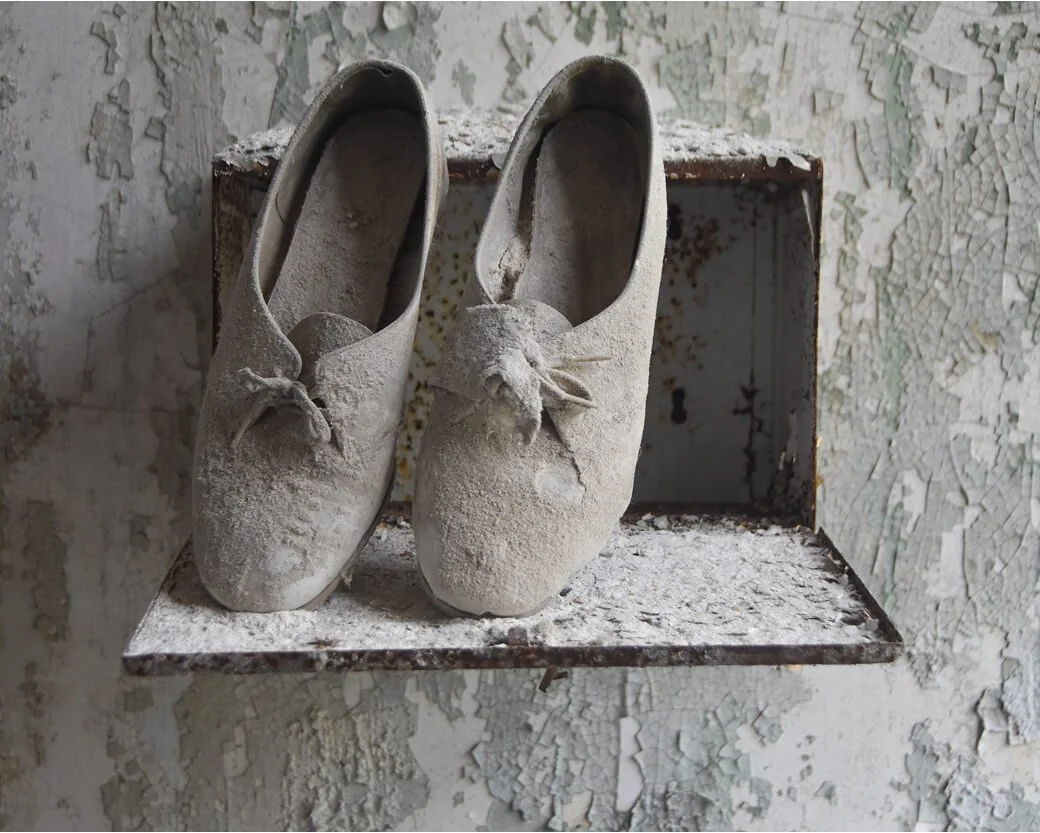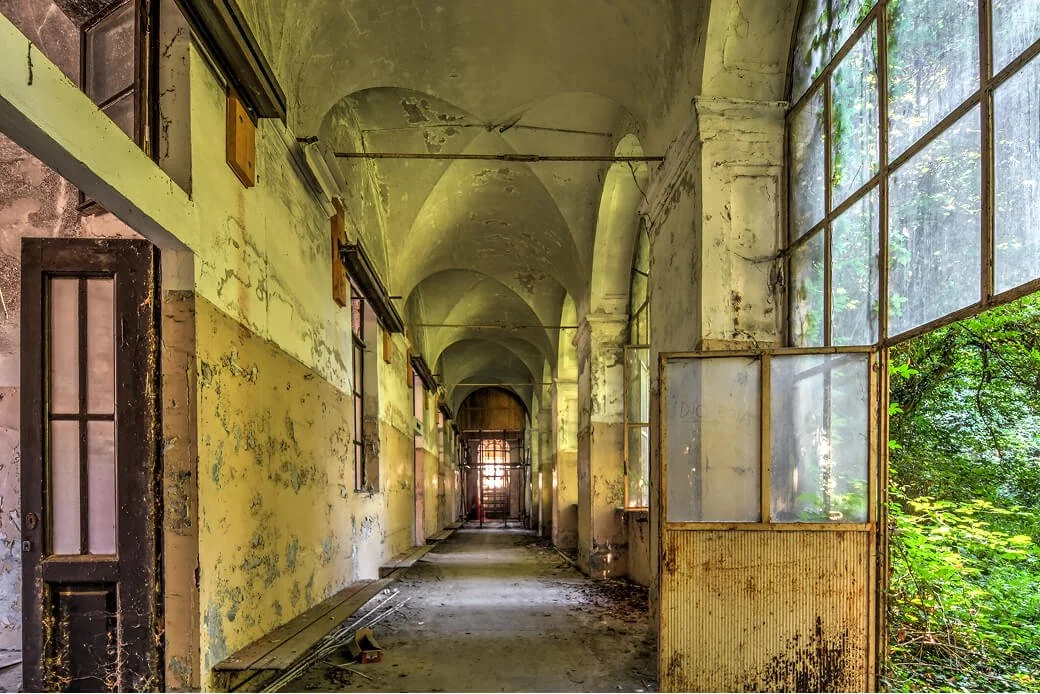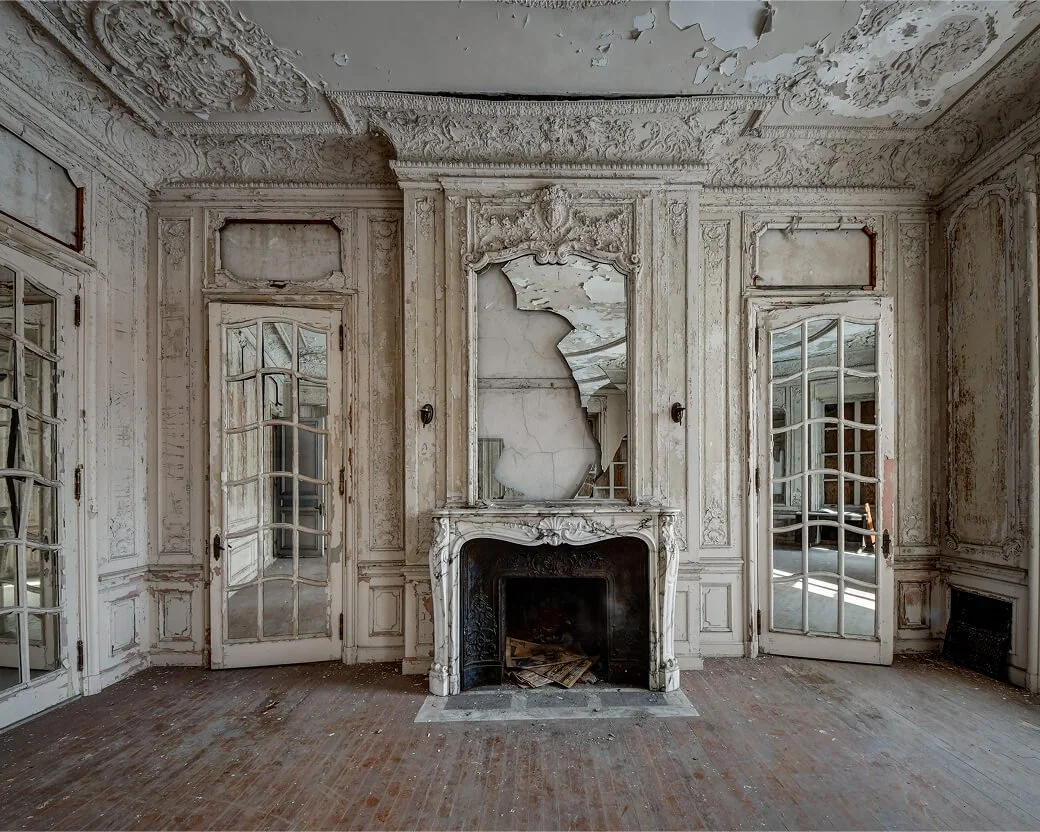How to Find and Photograph Abandoned Buildings
I wish there’d been a guide like this when I started. Back then, I followed my instincts and hunches, often with no clue what I was doing or where I was headed. Most of what I know now came from trial and error and from generous friends who pointed me in the right direction or passed along scraps of knowledge over coffee or while looking at maps together.
Urban exploration photography isn’t really something that you can pick up from a class or a manual. Rather, you learn it from real-life experience and getting out there to find the best spots for honing your photography craft. From walking past a place every day and finally seeing it, from getting your boots muddy in an overgrown lot, from discovering the silence inside a building that’s been empty longer than you’ve been alive.
This guide pulls together what I’ve learned so far. It’s not exhaustive and it won’t tell you where to go (in fact, most people keep their favourite places to themselves), but it will give you a starting point to find and photograph your own abandoned spaces. Whether you’re just getting curious or looking to hone how you shoot these kinds of spaces, I hope it helps.
Understanding Urban Exploration
Urban exploration, or urbex, is the practice of exploring abandoned places. These might be empty houses, closed-down factories, unused schools, or entire industrial sites left to decay. For many photographers, the draw isn’t just in the structure itself, but in the sense of history and change that lingers inside. What makes them interesting is how unpredictable they are. No two buildings fall apart in the same way.
In the last few years, urbex photography has become more popular. Social media has made it easier for people to share their images, and that’s helped grow the interest. Platforms like Instagram and TikTok have introduced more people to this type of photography, but finding locations is still mostly word of mouth or personal research. Most experienced photographers don’t share exact spots publicly, partly to protect the sites and partly because the search is part of the experience.
If you’re just starting out, it helps to understand that this isn’t a quick hobby. It takes time, research, and patience. But when you find a place that catches the light just right or tells a story through the smallest detail, it’s worth the effort.
Types of Abandoned Structures
The type of abandoned structures open to exploration varies significantly between different regions and countries.
In Japan, for example, abandoned infrastructure is known as "haikyo" (廃墟), literally meaning "ruins," and there are many such sites due to rapid industrialization, war damage, the 1980s real estate bubble, and natural disasters. Other countries have their own unique abandoned sites, such as Bosnia and Herzegovina's Željava Air Base, an underground facility abandoned since 1992. Here are a few of the better-known abandoned places that have drawn photographers for years:
Beelitz Hospital, Germany
A military hospital dating back to the 1800s, later used during wartime and abandoned after Soviet forces withdrew. Some of the buildings still stand, painted in a strange sky-blue that gives them a surreal look.
Craco Village, Italy
An ancient hilltop town with roots as far back as the 6th century. It was slowly abandoned throughout the 20th century due to landslides, floods, and poor farming conditions.
Gouqi Island, China
Public libraries, newspaper archives, and local history groups sometimes hold records or stories about places long forgotten. You might even find that a building you pass every day has an incredible backstory.
Miranda Castle, Belgium
Built in the 1800s as a summer home, later used during World War II and abandoned by the early 90s. The structure looks like something from a storybook, with towers and spires now overtaken by decay.
Ross Island, India
Once a British colonial administrative hub, the island was abandoned and eventually taken over by wild ficus trees. Today it looks more like a ruin swallowed by the forest.
Six Flags, New Orleans, USA
This theme park was hit hard by Hurricane Katrina in 2005. Floodwaters destroyed most of the rides. It’s been sitting empty ever since, with redevelopment plans announced but never quite realized.
Finding Abandoned Locations
Finding places worth photographing takes time, curiosity, and a bit of digital detective work. Most of the time you’re not handed a list, so you have to piece things together slowly, from odd map details or half-buried news stories. If you’re lucky, someone you trust might point you in the right direction. But most of the process is solo, and that’s part of what makes it so satisfying.
Online Maps and Search Tools
Some websites collect user-submitted locations—tens of thousands of them—from all over the world. They're not always up to date, and some spots get picked over or shut down once they become too well-known. But they can be helpful as a jumping-off point, especially if you're looking for patterns.
A few newer tools use satellite data and AI to flag buildings that might be abandoned. They look at things like:
Distance from other buildings
Size and footprint of the structure
Proximity to industrial or forested areas
Signs of neglect like roof collapse or vegetation overgrowth
I don’t rely on these tools alone, but they’ve helped me zero in on places to investigate further. It’s not foolproof, but when paired with manual searching, they can save time.
Researching Locally
Online maps can only take you so far. Local research is where things start to come alive. I’ve found some of my best locations through digging into local history. Some things that have worked:
Scanning local newspapers for mentions of factory closures or school shutdowns
Visiting local history societies or checking out community archives
Spending time in older industrial or farming areas, where buildings get left behind more often
Talking to other photographers or explorers when the moment feels right
The good leads usually come through research or personal connections. They're rarely handed out in public forums or comment sections.
What to Look For
Once you’re out there, or narrowing things down on satellite view, there are a few signs that tend to mean a place has been left alone for a while.
Thick vegetation growing close to the building, especially around doors and windows
Boarded or broken windows that haven’t been patched
Sagging roofs, leaning fences, or other signs of long-term disrepair
No visible driveway or road maintenance
Power lines that have been removed, or no sign of a meter box
Warning signs like "Keep Out" or "No Trespassing" (which should always be respected, but are often a clue that something is no longer in use)
Look out for these, and you may end up finding something worthwhile!
Legal and Ethical Considerations
Urban exploration itself isn’t illegal, but how you approach it can be. Entering any property without permission is considered trespassing, whether or not there’s a sign posted. Some areas treat it as a minor offense. In others, it can carry heavier penalties.
Here are a few of the risks that come with exploring without permission:
Trespassing charges
Breaking and entering, especially if you force a door or window
Property damage claims, even if the damage is unintentional
Liability if you get injured on the site
Getting Permission to Photograph Abandoned Places
The most straightforward and legal way to explore is by getting permission ahead of time. It’s not always easy, but it’s worth trying, especially if you want to return to a site or share the work publicly.
That usually means:
Looking up the property owner through local tax records or real estate listings
Reaching out directly to explain your interest and ask for access
Being clear about your intent to photograph and offering to share images afterward
Having a professional-looking website or portfolio to show you take the work seriously
It won’t guarantee a yes, but it can go a long way in building trust. Also, the National Park Service in the United States preserves many abandoned locations that offer legal and safe access, providing excellent opportunities for urbex photography without legal concerns.
Ethics in Urban Exploration
Beyond legality, there’s a shared understanding among most explorers that these spaces deserve care. Some basic principles that matter:
Follow the old adage: “Take only photos, leave only footprints”
Don’t share exact location details for vulnerable or unprotected sites
Respect the historical and emotional weight of the space
Avoid using geotags on social media unless the site is public and protected
Support efforts to preserve or protect abandoned buildings with historical value
If a place is still standing in its original state, it’s probably because people have treated it with respect. Keeping that going helps everyone who comes after you.
Safety Precautions
Abandoned buildings can be unpredictable. Floors give way, ceilings collapse, rusted nails and broken glass are common, and in some places, so are toxic materials like asbestos or old chemical residue. Mold can be a problem, especially in closed spaces with no airflow, and you never know when you might come across an animal, or another person, who’s taken shelter inside. Even if a place looks stable from the outside, remember it might not be.
That’s why I always plan carefully. A little preparation goes a long way. I research the location beforehand, check for recent photos or news updates, and I never go in blind. I always explore during daylight hours and make sure someone knows where I’m going and when I plan to be back. I rarely explore alone. When I do, it’s in well-known public locations. And I always have a clear exit plan. I usually leave well before dark. Light fades fast inside these buildings, and things become harder to judge once it does.
Abandoned Photography Equipment and Techniques
Getting the right shot in a decaying building takes skill. It’s also about developing your own personal creativity and finding your own style. Here are a few pointers to get you started.
Camera Gear
This is what I usually pack:
A DSLR or mirrorless camera that performs well in low light
A wide-angle lens (I use a 11mm range) for interiors and tight hallways
A standard zoom (like 14–35mm) to give you options without changing lenses too often
A tripod, especially useful in dim conditions where longer exposures are needed
A remote shutter or timer to avoid camera shake during long exposures
Extra batteries and memory cards (both tend to run out faster than you’d expect).
A small lens cloth or blower to deal with dust
A weather-resistant camera bag that’s easy to carry and swing around when needed
None of this has to be top-of-the-line. What matters more is that it’s gear you know and can use confidently in less-than-ideal conditions.
Lighting Considerations
Lighting in abandoned spaces can be both a challenge and a gift. The best moments usually come from natural light; beams cutting through broken windows, soft glow bouncing off dust in the air, or slanted sunlight hitting a wall at just the right time. I try to work with that as much as possible.
That said, there are times when you’ll need to bring your own. Be prepared with LED panels or torches.
Composition Tips
Leading lines are useful and so are layers. Shooting through windows, framing subjects inside doorways and playing with foreground and background to show depth all work really well. I take both wide shots and close details. Sometimes the smallest objects carry the most weight. The goal isn’t just to show what’s there. It’s to capture what it feels like to stand in that room and see it slowly returning to the earth.
Post-Processing and Sharing
Editing Approaches
Post-processing can enhance the mood and impact of abandoned building photography. Use your favorite photo editing software to:
Adjust contrast to highlight textures and details
Consider black and white conversion to emphasize form and texture
Use split toning to create mood (often cool shadows with warm highlights)
Enhance details in shadows and highlights to reveal architectural elements
Apply subtle vignetting to direct viewer attention
Get Out There and Give It a Go!
Photographing abandoned places is a way of documenting spaces that might not be around much longer. The peeling paint, the dust, the way the light moves through a broken window… all these details tell a story, and it’s our job to capture that.
Yes, it takes time to find locations and it takes patience to shoot in difficult conditions, but when it comes together, it’s worth it. These are places most people will never see. Photographing them means you get to be part of something truly unique.










